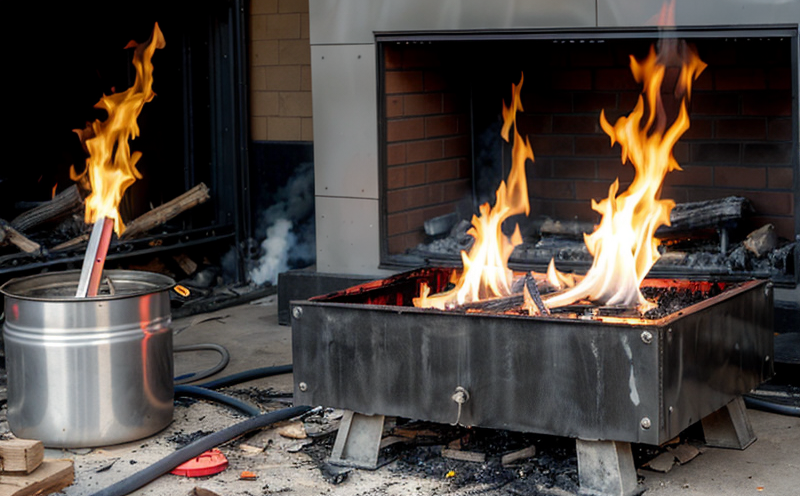ASTM D3801 Vertical Burning Test for Plastics
The ASTM D3801 vertical burning test is a critical standard used to assess the flammability of plastics. This test evaluates how well a plastic material resists ignition and continues to burn, providing valuable information for manufacturers and users alike.
This test method is widely recognized in the electronics sector due to its role in ensuring product safety and compliance with international standards. The procedure involves placing a specified specimen on an inclined surface and subjecting it to a flame under controlled conditions. The behavior of the material during and after ignition is meticulously observed, which includes measuring burn rate, flaming time, and residual char length.
The significance of this test extends beyond mere compliance; it also plays a pivotal role in enhancing product safety by identifying materials that may pose fire hazards when exposed to heat or flame. Compliance with ASTM D3801 is mandatory for many products sold in the electronics market, particularly those intended for residential use.
The procedure outlined in ASTM D3801 has been refined over decades of use and is based on international standards that are harmonized across different regions. This ensures consistency in results, which is essential for quality assurance and regulatory compliance. The test method has also evolved to include modifications such as the addition of flame retardants, which can significantly alter a material's flammability characteristics.
One of the key aspects of this testing is the precise specimen preparation. Specimens are cut into specific dimensions that allow for consistent and repeatable results. The choice of specimen size and shape can influence the outcome, underscoring the importance of adhering to standard procedures. Once prepared, specimens undergo rigorous quality checks before being subjected to the flame test.
The instrumentation used in this testing is equally crucial. High-quality burners and timers are employed to ensure accurate timing and consistent heat application. Additionally, specialized video cameras are often utilized to capture detailed images of the burning behavior, enhancing data collection and analysis.
Post-test analysis involves measuring various parameters such as the time taken for ignition, flaming duration, total burn time, and the length of residual char. These metrics provide a comprehensive understanding of the material's flammability characteristics. The results are then compared against specified acceptance criteria to determine whether the material meets the required standards.
Given its role in ensuring product safety and compliance with international regulations, the ASTM D3801 vertical burning test is indispensable for manufacturers operating within the electronics sector. It not only helps in identifying materials that may pose fire hazards but also aids in the development of safer products. By adhering to this standard, manufacturers can enhance their reputation and market credibility while ensuring product safety.
Why It Matters
The ASTM D3801 vertical burning test is essential for several reasons. Primarily, it ensures that electronic products comply with fire safety regulations, thereby protecting consumers and reducing the risk of火灾已终止





